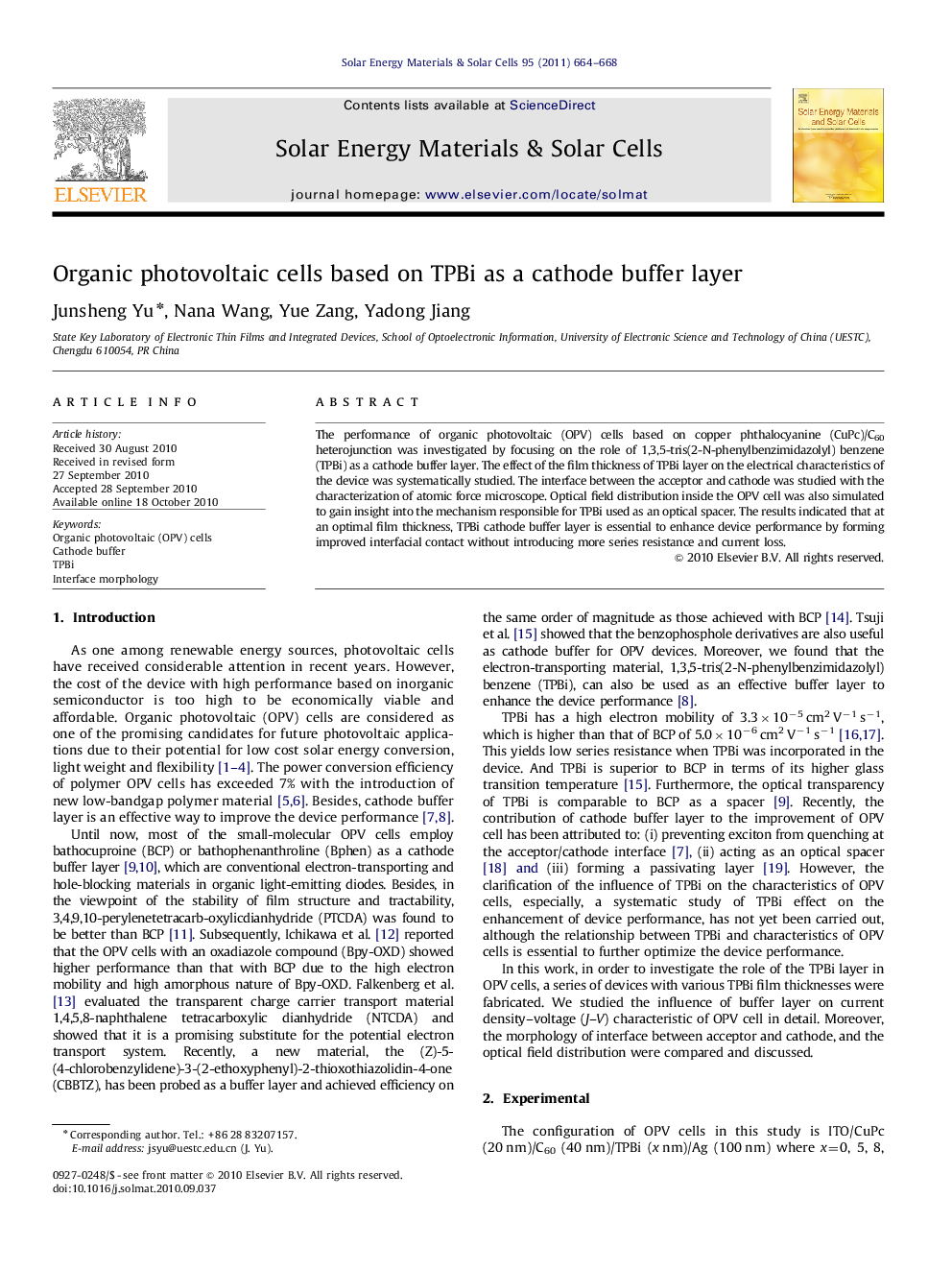| Article ID | Journal | Published Year | Pages | File Type |
|---|---|---|---|---|
| 79237 | Solar Energy Materials and Solar Cells | 2011 | 5 Pages |
The performance of organic photovoltaic (OPV) cells based on copper phthalocyanine (CuPc)/C60 heterojunction was investigated by focusing on the role of 1,3,5-tris(2-N-phenylbenzimidazolyl) benzene (TPBi) as a cathode buffer layer. The effect of the film thickness of TPBi layer on the electrical characteristics of the device was systematically studied. The interface between the acceptor and cathode was studied with the characterization of atomic force microscope. Optical field distribution inside the OPV cell was also simulated to gain insight into the mechanism responsible for TPBi used as an optical spacer. The results indicated that at an optimal film thickness, TPBi cathode buffer layer is essential to enhance device performance by forming improved interfacial contact without introducing more series resistance and current loss.
Graphical AbstractFigure optionsDownload full-size imageDownload as PowerPoint slide
